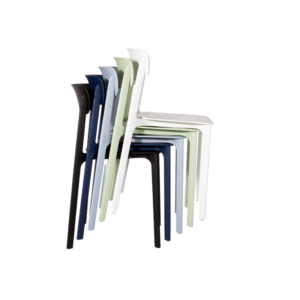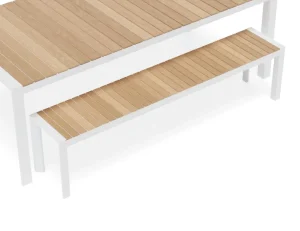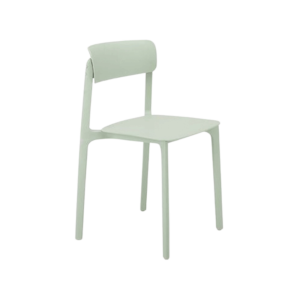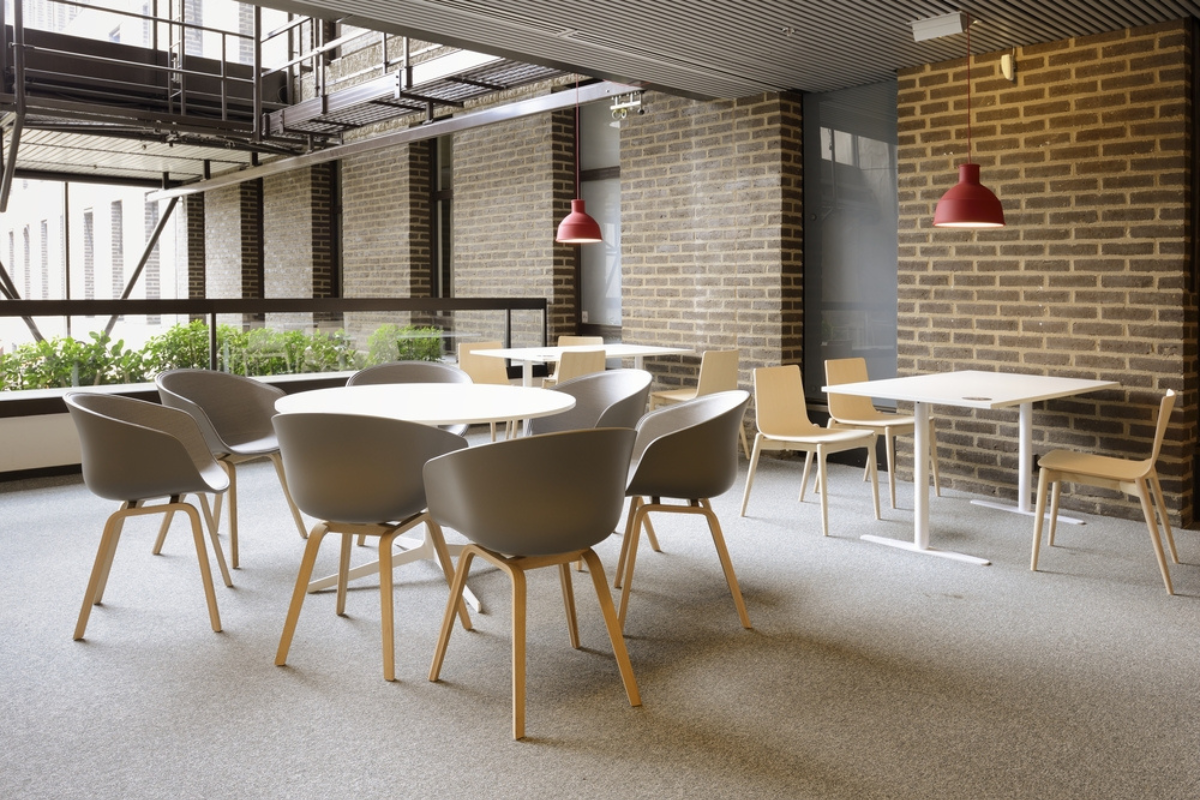
Shaping Educational Spaces: The Crucial Role of Cafeteria Furniture
Cafeteria Furniture in academic institutions holds a unique and central place in the daily lives of students and staff.
A Cafeteria is not merely where meals are consumed; it is a bustling hub of social interaction, idea exchange, and relaxation.
As an outfitter or architect tasked with furnishing school and university cafeterias, you are pivotal in creating inviting, functional, and vibrant dining spaces that facilitate community building and enhance the overall academic experience. This comprehensive guide will explore the essential considerations and furniture essentials for furnishing cafeterias in educational institutions.
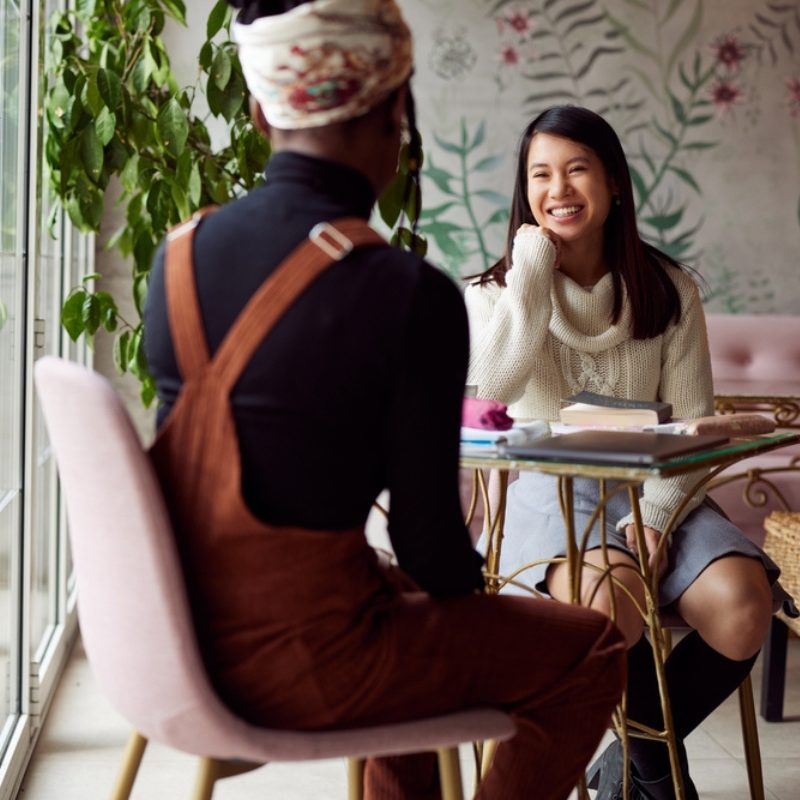
Educational Cafeterias help Nurturing Connections & Strengthening Bonds through Thoughtful Furniture Choices
Cafeterias serve as the heartbeat of academic institutions. These spaces gather students, faculty, and staff in one place, fostering connections, friendships, and a sense of belonging.
Cafeterias are unique in their ability to bring together individuals from every corner of the institution. Here, students of various ages and academic disciplines, alongside dedicated faculty and administrative staff, coalesce into a dynamic community. In this shared space, the walls between classrooms and offices dissolve, creating an environment where spontaneous conversations, meaningful interactions, and the exchange of ideas thrive.
Prioritising Well-Being with Comfortable Dining Space
A well-designed cafeteria offers more than just sustenance; it supports the overall well-being of the academic community. Comfortable seating and an inviting atmosphere encourage relaxation and stress relief.
Indeed, a cafeteria is more than just a place to find sustenance; it serves as a respite from the rigours of academic life. Here, students, faculty, and staff can momentarily set aside their textbooks, research papers, and administrative tasks to partake in an essential act of self-care: nourishing both body and soul. In these moments of respite, the choice of furniture becomes paramount, for it directly impacts the well-being of those who seek solace within these walls.
Elevating Learning Experiences through Cafeteria Design
An inviting cafeteria can extend its influence beyond dining. It can become an extension of the classroom, where ideas are exchanged, collaborations are born, and students can recharge both physically and mentally.
Cafeteria Furniture Essentials: Factors to Consider
- Gathering Spaces
Foster Togetherness with Thoughtful Furniture Arrangements
Consider how students and staff gather in cafeterias. Create seating layouts that encourage social interaction while ensuring easy access and traffic flow.
The use of Stackable chairs can expand the use of the cafeteria premises, clean the area easily stacking the chairs in a corner, or simply keep extra seating in a warehouse without hassle.
- Materials and Durability
Choose Durability for Long-Lasting Furniture
Cafeteria furniture should be constructed from sturdy materials capable of withstanding frequent use and cleaning. Explore options like the Notion Chair, known for its durability.
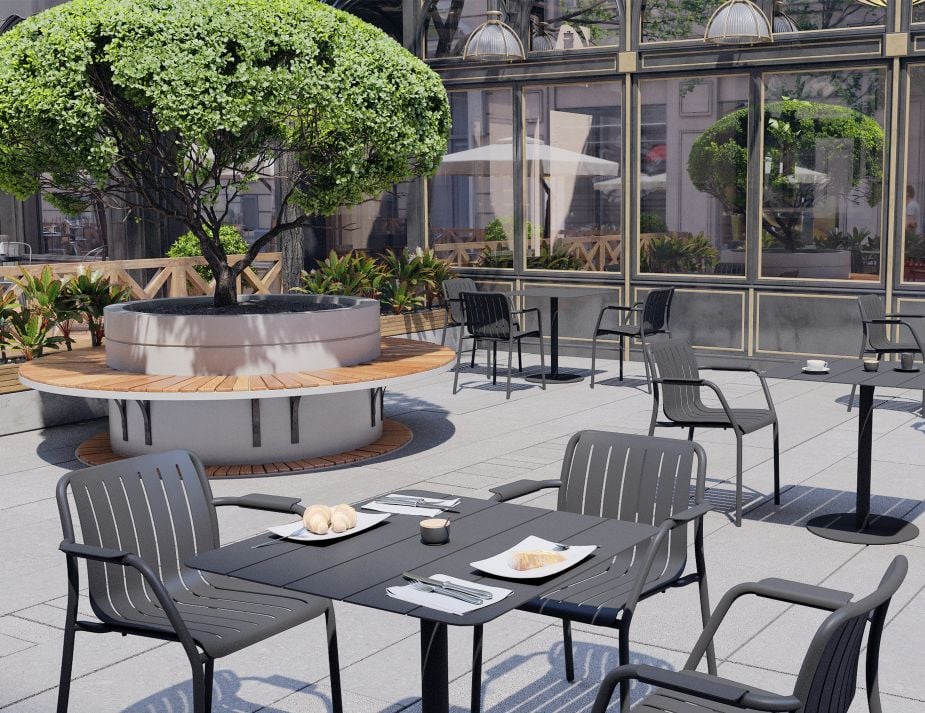
Aluminum is a material that stands out for its remarkable versatility and adaptability, making it a prime choice for cafeteria furniture. Its lightweight nature ensures ease of mobility, allowing furniture to be rearranged effortlessly to accommodate different group sizes or adapt to evolving needs. This feature is particularly beneficial in educational institutions, where flexibility is key to creating dynamic, multifunctional spaces.
Polypropylene, on the other hand, offers its own set of advantages that make it an excellent choice for cafeteria seating. This thermoplastic polymer boasts exceptional strength and durability while remaining surprisingly lightweight. This combination of sturdiness and portability ensures that polypropylene chairs can withstand the daily wear and tear of a bustling cafeteria, all while being easy to rearrange and maintain.
Moreover, polypropylene is highly resistant to moisture, making it a practical material for cafeteria furniture subjected to occasional spills and cleaning routines. Its non-absorbent properties prevent the material from retaining moisture, reducing the risk of staining or damage over time. This feature ensures that polypropylene chairs maintain their pristine appearance even in the face of frequent use and regular cleaning.
- Cleaning and Maintenance
Simplify Maintenance with Easy-to-Clean Furniture
The COVID-19 pandemic has forever altered the way we view and prioritise hygiene, particularly within educational institutions. As we emerge from the pandemic’s shadow, the necessity for maintaining stringent hygiene standards in academic environments has become an overarching concern. Now, more than ever, ensuring the safety and well-being of students, faculty, and staff is paramount. This paradigm shift calls for a comprehensive reassessment of hygiene practices and the integration of new protocols that safeguard public health within educational settings.
Furniture and materials play a pivotal role in this new era of heightened hygiene awareness. Choosing materials that are easy to clean and disinfect is essential. Surfaces that resist microbial growth and staining are a priority. Materials like polypropylene and aluminium, known for their non-absorbent properties and resistance to moisture, have emerged as popular choices in post-pandemic cafeteria furniture, as they facilitate effortless cleaning and maintenance.
Effortless cleaning and maintenance are essential for a hygienic dining environment. Opt for chairs that resist staining and are easy to wipe down.
- Comfort and Ergonomics
Prioritise Comfort and Well-Being with Ergonomic Seating
Select chairs that offer comfort and ergonomic support, promoting healthy posture and contributing to the physical well-being of students and staff.
Seating Solutions for Educational Cafeterias
- Dining Chairs
Elevate Dining Experiences with Stylish Dining Chairs
Dining chairs should combine style with comfort. Explore options like the Roku Outdoor Chair, which offers a blend of aesthetics and durability.
- Cafeteria Chairs
Enhance Functionality with Purpose-Built Cafeteria Chairs
Dedicated cafeteria chairs are designed with durability and ease of use in mind. Many are stackable, providing practical solutions for educational institutions.
- Indoor Benches
Optimise Seating Flexibility with Indoor Benches
Benches offer versatile seating options and accommodate larger groups, promoting inclusivity and interaction.
- Outdoor Benches
Extend Dining Options with Durable Outdoor Benches
For institutions with outdoor dining spaces, select benches designed to withstand various weather conditions, enabling year-round use.
One of aluminium’s most remarkable qualities is its innate ability to resist the elements. Unlike other materials that may deteriorate when exposed to rain, sun, or temperature fluctuations, aluminium stands firm in the face of nature’s challenges. It does not rust or corrode, ensuring your outdoor benches remain in excellent condition, even after years of outdoor exposure.
The Impact of Color and Aesthetics in Cafeteria Furniture
- Colour Psychology
Create a positive atmosphere with thoughtful colour choices
The colours used in a school cafeteria design can significantly influence the ambience. Colours like blues and greens evoke tranquillity, while warm accents create comfort and reassurance.
- Customisation
Personalise the Experience with Custom Furniture
Consider customisable seating options for personalisation and branding, making your university cafeteria furniture unique to your institution. At Level Furniture Solutions we have a wide range of dining chair colours for you to “brand” your cafeteria project along with your cafeteria tables.
The role of the cafeteria in academic institutions extends far beyond mealtime and the dining hall. It is a place where connections are forged, well-being is nurtured, and learning is extended beyond the classroom.
By carefully selecting furniture that promotes gathering, durability, cleanliness, comfort, and aesthetics, you can create an environment that elevates the academic experience. Explore Level Furniture Solutions for a range of stylish and durable seating options, including the Notion Chair and Roku Outdoor Chair.
By investing in the right furniture, you can foster community, well-being, and learning in your educational institution’s cafeteria. Begin your transformation today and shape the future of academic spaces.
At Level Furniture Solutions we have a wide range of high-quality cafeteria furniture for your project, from aluminium dining chairs and benches to Polypropylene Stackable Chairs for sale. Call our Customer Service team and let us help your project come through,
Our Trade Customers also ask:
Yes, ensure your furniture meets industry standards for safety, durability, and environmental compliance. For example, look for certifications like AS/NZS 4442:2018 for office furniture or FSC certification for responsibly sourced wood.
Thoughtful color choices can create a positive atmosphere, with colors like blues and greens evoking tranquility and warm accents providing comfort and reassurance.
By selecting furniture that promotes gathering, durability, cleanliness, comfort, and aesthetics, you can create an environment that elevates the academic experience and fosters community.
Use UV-resistant fabrics, rust-proof metals, and all-weather wicker for your outdoor furniture. Enhance comfort and ambience with cushions, umbrellas, and appropriate lighting. Plan the layout to ensure functionality and a relaxed atmosphere.
Prioritize essential pieces and consider durability to reduce long-term costs. Look for versatile furniture that serves multiple purposes and invest in high-traffic areas where wear and tear are most significant.

